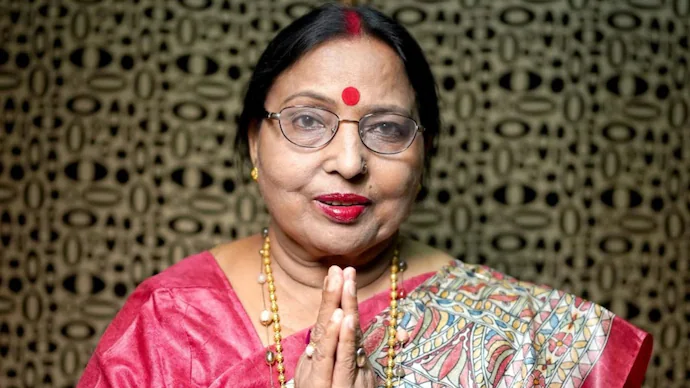Madhya Pradesh Switch to Hindi
Shifting Patterns in Stubble Burning
Why in News?
Madhya Pradesh has seen a sharp increase in Stubble burning cases, surpassing Punjab with over 10,000 farm fires reported.
Key Points
- The changing trends in stubble burning have added complexity to the harvest-season practice, which heavily contributes to North India's air pollution.
- Regional Trends:
- Alarming Rise in Madhya Pradesh: Madhya Pradesh recorded 506 stubble-burning cases surpassing its previous high of 296 cases, indicating a significant rise.
- Positive Reduction in Punjab: Punjab reduced its stubble-burning incidents from 587 to 262, showing a promising decline in crop residue burning.
- Increases in Uttar Pradesh and Rajasthan: Uttar Pradesh's cases jumped from 16 to 84 in a day, while Rajasthan’s incidents rose from 36 to 98, marking the season's second-highest count.
- Progress in Haryana: Haryana reported a downward trend, with cases dropping from 42 to 13, reflecting progress in managing stubble burning.
Stubble Burning
- About:
- Stubble (parali) burning is a method of removing paddy crop residues from the field to sow wheat from the last week of September to November, coinciding with the withdrawal of southwest monsoon.
- Stubble burning is a process of setting on fire the straw stubble, left after the harvesting of grains, like paddy, wheat, etc. It is usually required in areas that use the combined harvesting method which leaves crop residue behind.
- It is a common practice in October and November across North West India, but primarily in Punjab, Haryana, and Uttar Pradesh.
- Effects of Stubble Burning:
- Pollution: Emits large amounts of toxic pollutants in the atmosphere which contain harmful gases like methane (CH4), Carbon Monoxide (CO), Volatile Organic compounds (VOC) and carcinogenic polycyclic aromatic hydrocarbons.
- These pollutants disperse in the surroundings, may undergo a physical and chemical transformation and eventually adversely affect human health by causing a thick blanket of smog.
- Soil Fertility: Burning husk on the ground destroys the nutrients in the soil, making it less fertile.
- Heat Penetration: The heat generated by stubble burning penetrates into the soil, leading to the loss of moisture and useful microbes.
- Pollution: Emits large amounts of toxic pollutants in the atmosphere which contain harmful gases like methane (CH4), Carbon Monoxide (CO), Volatile Organic compounds (VOC) and carcinogenic polycyclic aromatic hydrocarbons.
- Alternatives to Stubble Burning:
- In-Situ Treatment of Stubble: For example, crop residue management by zero-tiller machine and Use of bio-decomposers.
- Ex-Situ (off-site) Treatment: For example, Use of rice straw as cattle fodder.
- Use of Technology: For example Turbo Happy Seeder (THS) machine, which can uproot the stubble and also sow seeds in the area cleared. The stubble can then be used as mulch for the field.
Chhattisgarh Switch to Hindi
Elephants Electrocuted in Raipur
Why in News?
The Chhattisgarh High Court has reprimanded the state energy department officials for negligence following the electrocution of three elephants in Raigarh district of Chhattisgarh.
Key Points
- Court’s Decision:
- A division bench directed the energy department to submit affidavits detailing the incident. The officials were asked to provide an account of the circumstances surrounding the elephants' deaths in Raigarh's Gharghoda Forest Range and to outline preventive measures to avoid future occurrences.
- Preliminary investigations revealed that forest department staff had repeatedly warned the local electricity department about the dangerously low 11 kV transmission line.
- However, no action was taken to address the issue, ultimately leading to the elephants’ deaths.
- Emphasis on Wildlife Safety:
- Taking up the matter suo motu, the court emphasized the importance of wildlife protection and conservation, underscoring the need for responsible management in areas inhabited by wildlife.
- Elephant Fatalities in Chhattisgarh:
- According to the state forest department, Chhattisgarh has reported over 70 elephant deaths in the past six years due to various causes, with 13 of these due to electrocution in 2024.
Bihar Switch to Hindi
Demise of Bihar's Folk Icon
Why in News?
Recently, Bihar’s folk music icon Sharda Sinha passed away. She was widely celebrated for her soulful Chhath songs.
Key Points
- About:
- Sharda Sinha, fondly known as 'Bihar Kokila,' was a celebrated Indian folk singer who made immense contributions to Bhojpuri, Maithili, and Magahi music.
- She played a crucial role in popularizing Bihar's traditional music, bringing it to a broader audience across India and beyond.
- Awards:
- Honoring her significant contributions to Indian folk music, she was awarded with Padma Bhushan in 2018.
Rajasthan Switch to Hindi
SC Guidelines to Eliminate Child Marriages
Why in News?
Recently, the Supreme Court guidelines aiming for the complete eradication of child marriages, have provided a significant boost to civil society groups in Rajasthan.
Key Points
- Prevalence of Child Marriages in Rajasthan:
- According to the National Family Health Survey-5, 25.4% of women aged 20-24 in Rajasthan were married before reaching the legal age of 18.
- Collective Effort to Eradicate Child Marriages by 2030:
- The Just Rights for Children Alliance (JRCA) , a non-governmental organization, emboldened by the SC new guidelines, has pledged to intensify efforts on the ground.
- They aim to eradicate child marriages in Rajasthan by 2030 through collective action, including raising awareness in villages.
- Supreme Court’s Guidelines:
- The Supreme Court's guidelines place accountability on village panchayats, school authorities, and child protection officers for preventing child marriages.
- The Court advised adopting a “prevention, protection, and prosecution” model to implement the Prohibition of Child Marriage Act, 2006 effectively.
- In 2024, the Rajasthan High Court mandated that village sarpanches, under the Rajasthan Panchayati Raj Rules, 1996, are responsible for restraining child marriages.
- The court directed the State government to inform and sensitise village leaders, emphasizing their accountability if they fail to prevent child marriages in their communities.
Prohibition of Child Marriage Act 2006
- The law seeks to prevent child marriages by making certain actions punishable and by appointing certain authorities responsible for the prevention and prohibition of child marriages.
- Definitions under the Act:
- “Child” means a person who, if a male, has not completed twenty-one years of age, and if a female, has not completed eighteen years of age.
- “Child marriage” means a marriage to which either of the contracting parties is a child.
- “Minor” means a person who has not attained his majority under the provisions of the Majority Act, 1875. As per the Majority Act, 1875, every person domiciled in India attain the age of majority on his completing the age of eighteen years.
- Child marriage is an offence punishable with rigorous imprisonment, which may extend to 2 years, or with fine up to Rs.1 Lakh, or both. The offences under the Act are cognisable and non-bailable.
- Persons who can be punished under the Law include:
- Whoever performs, conducts or directs or abets any child marriage.
- A male adult above 18 years marrying a child (Section 9).
- Any person having charge of the child, including parent or guardian, any member of an organisation or association, promoting, permitting, participating in a child marriage.
Uttar Pradesh Switch to Hindi
SC Upholds Uttar Pradesh Madrasa Education Board Act, 2004
Why in News?
Recently, the Supreme Court partially upheld the constitutional validity of the Uttar Pradesh Madrasa Education Board Act, 2004, affirming that the state has the authority to regulate madrasa education to maintain standards of excellence.
Key Points
- Supreme Court's Judgment:
- The Court declared that provisions concerning higher education, specifically at the Fazil (undergraduate) and Kamil (postgraduate) levels, were unconstitutional.
- These provisions conflicted with the University Grants Commission Act, 1956 falling under the Centre's exclusive jurisdiction as per Entry 66 of the Union List in the Seventh Schedule of the Constitution.
- The judgment stated that the Act was consistent with the state’s duty to ensure that students in recognised madrasas acquire a minimum level of competency. This ensures they can participate effectively in society and earn a living.
- The Court emphasized that while minorities have the right under Article 30 of the Constitution to establish and manage their educational institutions, this right is not absolute.
- The state has a legitimate interest in maintaining educational standards in minority institutions and can impose regulatory conditions for aid and recognition.
- The Court interpreted 'education' in Entry 25 of the Concurrent List broadly, stating that while madrasas impart religious education, their primary purpose is educational, bringing them within the ambit of this entry.
- The Madrasa Board conducts exams and issues certificates to students, further aligning with the educational framework.
- The Supreme Court set aside the Allahabad High Court's ruling, which had stated that the 2004 Act violated Article 21A (Right to Education) and the secularism principle of the Constitution.
- The Court clarified that Article 21A should be interpreted alongside the rights of religious and linguistic minorities to establish educational institutions.
- Referring to Article 28(3) of the Constitution, the Court added that students attending a State-recognised minority institution should not be compelled to take part in religious instruction or worship, ensuring their right to freedom of religion.
- The Court declared that provisions concerning higher education, specifically at the Fazil (undergraduate) and Kamil (postgraduate) levels, were unconstitutional.
Uttar Pradesh Board of Madarsa Education Act, 2004
- The Act aimed to regulate and govern the functioning of madrasas (Islamic educational institutions) in the state of Uttar Pradesh.
- It provided a framework for the establishment, recognition, curriculum, and administration of madrasas across Uttar Pradesh.
- Under this Act, the Uttar Pradesh Board of Madarsa Education was established to oversee and supervise the activities of madrasas in the state.




%20MPPCS%202025%20Desktop%20E.jpg)
%20MPPCS%202025%20Mobile%20E%20(1).jpg)










.png)
.png)











 PCS Parikshan
PCS Parikshan




